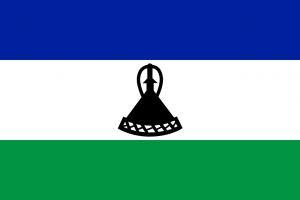Difference between revisions of "Language/Southern-sotho/Grammar/Basic-Sentence-Structure"
m (Quick edit) |
m (Quick edit) |
||
| Line 1: | Line 1: | ||
<span pgnav> | |||
{| class="wikitable pg_template_nav" | |||
|[[Language/Southern-sotho/Grammar/The-Alphabet-and-Pronunciation|◀️ The Alphabet and Pronunciation — Previous Lesson]] | |||
|[[Language/Southern-sotho/Vocabulary/Common-Greetings|Next Lesson — Common Greetings ▶️]] | |||
|} | |||
</span> | |||
{{Southern-sotho-Page-Top}} | {{Southern-sotho-Page-Top}} | ||
| Line 97: | Line 104: | ||
{{Southern-sotho-Page-Bottom}} | {{Southern-sotho-Page-Bottom}} | ||
<span pgnav> | |||
{| class="wikitable pg_template_nav" | |||
|[[Language/Southern-sotho/Grammar/The-Alphabet-and-Pronunciation|◀️ The Alphabet and Pronunciation — Previous Lesson]] | |||
|[[Language/Southern-sotho/Vocabulary/Common-Greetings|Next Lesson — Common Greetings ▶️]] | |||
|} | |||
</span> | |||
Revision as of 22:46, 2 April 2023
| ◀️ The Alphabet and Pronunciation — Previous Lesson | Next Lesson — Common Greetings ▶️ |
Southern Sotho, also known as Sesotho, is a Bantu language spoken primarily in South Africa and Lesotho. Like other Bantu languages, it has a simple and predictable sentence structure that follows the subject-verb-object (SVO) order. In this lesson, we will introduce you to the basic sentence structure in Southern Sotho, including subject-verb-object order and simple sentences.
Understanding the Subject-Verb-Object (SVO) Order
In Southern Sotho, the sentence structure follows a basic pattern of subject-verb-object, or SVO. This means that the subject of the sentence, typically the person or thing carrying out the action, comes before the verb, which expresses the action itself, which in turn comes before the object of the sentence, or the person or thing on which the action is performed.
For example, in the sentence, "Ke bula ntho e ntle", "Ke" means "I", "bula" means "cook", and "ntho e ntle" means "a good thing". Therefore, the sentence means "I am cooking a good thing".
This sentence structure is very common in languages around the world, including English. Therefore, it should not be too difficult for English speakers to learn.
Forming Simple Sentences
In Southern Sotho, as in other languages, there are simple sentences that consist of just one subject-verb-object grouping. Here are some basic examples:
- Ke bula (I cook)
- O ntse (He is sitting)
- Ba lelapa (They are at home)
As you can see, each sentence has a subject, a verb, and an object, all in the correct order.
Note that in Southern Sotho, the verb does not change based on the tense, like it does in English. The tense of the sentence is indicated by other words in the sentence, such as time words or auxiliary verbs.
Vocabulary
Here are some common verbs and nouns in Southern Sotho that you can use to practice your sentence structure:
| Southern Sotho | Pronunciation | English |
|---|---|---|
| re se ke ra | rə sɛ kɛ ɾa | we are singing |
| u thusa | u tʰʊsa | you help |
| ba ile | ba ilɛ | they have come |
| ntho e ntle | ntʰɔ ɛ ntʰlɛ | a good thing |
| setsebi sa ka | sɛtsɛbi sa ka | my friend |
| mosadi | mosadi | woman/wife |
| ntate | ntatɛ | man/father |
| bana | bana | children |
Exercises
Here are some exercises to practice forming basic sentences in Southern Sotho:
- Translate the following sentences into Southern Sotho:
- The dog is barking.
- She is eating an apple.
- We are reading a book.
- They are playing soccer.
- Form five of your own simple sentences using the basic sentence structure we have covered.
- Practice saying your sentences out loud, focusing on your pronunciation and intonation.
Conclusion
In this lesson, we introduced you to the basic sentence structure in Southern Sotho. We learned about the subject-verb-object (SVO) order and how to form simple sentences using this structure. We also practiced with some common verbs and nouns to help solidify your understanding of the basics. With practice and determination, you'll be able to form more complex sentences in Southern Sotho in no time!
Other Lessons
- Present Tense
- How to Use Be
- Describing Nouns
- The Alphabet and Pronunciation
- Describing Verbs
- Negation
- Plurals
- Past Tense
- Conditional Mood
- Asking Questions
| ◀️ The Alphabet and Pronunciation — Previous Lesson | Next Lesson — Common Greetings ▶️ |
